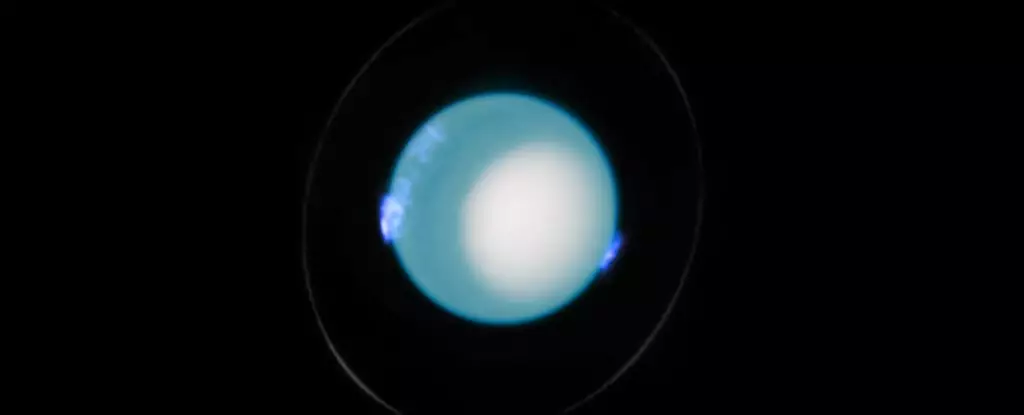The planet Uranus has always been a subject of intrigue within our Solar System, lying far beyond the reach of human exploration and habitually shrouded in an icy mystery. Recent observations have entirely transformed our understanding of this enigmatic planet, particularly concerning the duration of its day. Newly collected measurements indicate that a full rotation on Uranus actually takes 17 hours, 14 minutes, and 52 seconds—mind you, that’s a full 28 seconds longer than previously estimated based on data from Voyager 2’s 1986 flyby. While at first glance, this additional time may seem trivial, it echoes profoundly through the realm of planetary science, illuminating some glaring inaccuracies in our prior understandings.
A Shift in Scientific Perspective
The previous model relied on outdated rotation rates, which had significant ramifications for the accuracy of scientific measurements concerning Uranus. According to Laurent Lamy, an astrophysicist at the Paris Observatory, this breakthrough not only provides a fundamental reference for astronomy research but also resolves long-standing ambiguities regarding Uranus’s magnetic orientation. These weaknesses in our prior models rendered it impossible to consistently track the magnetic poles of Uranus—a critical endeavor for understanding the planet’s dynamics over time. By reevaluating basic assumptions, we can appreciate how empirical evidence redefines our comprehension of even the most distant celestial bodies.
The Challenge of Studying Distant Giants
Uranus and its neighbor Neptune inhabit the uncharted territories of our Solar System, existing at such great distances from the Sun that they appear dim and small through conventional telescopes. Uranus orbits at double the distance of Saturn, while Neptune lingers even farther, more than three times that distance. As a result, studying these ice giants presents unique challenges, rendering exploration efforts limited. Only the Voyager mission ventured close enough to unveil essential data regarding their atmospheres, magnetospheres, and rotational characteristics over three decades ago. Even the methodologies employed during those early explorations may be biased due to the localized conditions of the planets at that specific time, urging scientists to demand new and innovative approaches to gathering reliable information.
Illuminating the Aurora
Recent findings arose from an extensive analysis of data collected by the Hubble Space Telescope between 2011 and 2022. These observations focused on Uranus’s intriguing ultraviolet auroras, phenomena analogous to Earth’s auroras. Solar wind particles collide with Uranus’s magnetosphere, generating spectacular displays as they are propelled into the planet’s upper atmosphere. Given the unique tilt of Uranus’s rotational axis, which is almost parallel to its orbital plane, identifying the magnetic poles posed a significant challenge. However, through their meticulous tracking of the ultraviolet emissions, Lamy and his colleagues successfully pinpointed the magnetic poles, leading to a precise recalibration of the length of a day on Uranus.
A Leap Forward in Planetary Science
The research team heralds this updated measurement as the most accurate ever recorded for a giant planet, topping even Jupiter’s figures. What this means for planetary science is profound. The methodology harnessed to derive this updated figure opens the door for similar analyses of the gas giants across our Solar System, allowing for systematic studies into their internal structures and rotational behaviors. With a fresh understanding of Uranus’s rotation established, the scientific community can now compare decades’ worth of auroral observations and collaboratively plan future exploratory missions.
The Implications for Future Research
As our methods become increasingly precise, so too do the scientific inquiries surrounding these celestial giants evolve. This revelation not only enhances our understanding of Uranus but epitomizes a broader truth in the scientific discourse: knowledge is both iterative and self-correcting. The hurdles once posed by outdated data now pave the way for a thrilling epoch of discovery, where new missions and technologies will augment our cosmic repertoire. Future research endeavors will no longer be shackled by the weight of past errors, but rather propelled by enhanced methodologies that promise to uncover even deeper secrets locked within the icy confines of Uranus and its enigmatic neighbor, Neptune.

